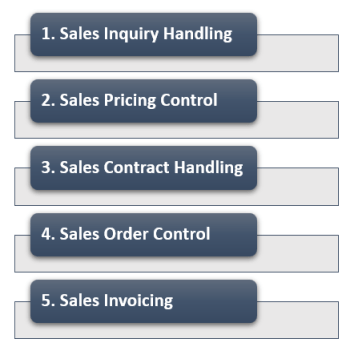ERP Service Module – Call Handling and Service Orders Control
April 3, 2025
 ERP Service Module – Call Handling and Service Orders Control
ERP Service Module – Call Handling and Service Orders Control
Call Handling Proper operation of a help desk is an essential component of proper servicing and resolution of problems. Service module of an ERP system assists organization to respond promptly both in respect of internal and external customers and gain valuable management data which helps in retaining customers as well as improve internal operation of…
 Why are Companies Constantly Upgrading their ERP Systems?
Why are Companies Constantly Upgrading their ERP Systems?
Enterprise Resource Planning (ERP) is the lifeblood of any business today. Any business, be it a medium scale enterprise or a multinational corporation relies extensively on the use of Enterprise Resource planning systems. This is the reason why these systems tend to be very expensive. There are mega-corporations like SAP and Oracle, which make billions…
 Turbo Charging ERP with BI and CPM
Turbo Charging ERP with BI and CPM
Business Intelligence (BI) – An ERP product provides hundreds of standard reports, generated weekly or monthly or year end basis which acted as a hardcopy dashboards within the organization. In order to improve report generation functionality, an ERP system provides various report writing tools (such as crystal report writer, safari report writer) as well as…
In the context of growing market competition, organizations are focusing more on closer partnership across supply chain. Increasing efficiency in sales and distribution process facilitates an organization to maintain its competitive edge. Best practice processes, embedded in an ERP package, are an enabler in this direction.
The important components of sales modules:
Integration with other modules: Sales module is a highly integrated execution module. It draws most of its input from the following modules:

Sales pricing control helps to maintain prices for items, details of discount structure and special discount given to some category of customers such as Original Equipment Manufacturer (OEM).
A price book originates with base price for the item. A single level discount rule with a minimum or maximum quantity or pricing break, is attached to price book. Additional pricing conditions such as category of suppler, delivery schedule etc. may be formulated in a matrix format, for attaching to the price book.
Normally, a validity period and minimum committed quantity forms part of the contract. Cumulative called quantity by the customer, delivered quantity and invoiced quantity are maintained in the system for control purpose. The easy way of making a contract for existing customer is by copying an old contract and doing modification in the system.
For a new customer, data related to header and lines are entered in the requisite session. The system helps in evaluating the contract at any given time, and customer may be reminded for any failure to meet their part of commitment.
Through use of templates, the system allows quick data entry process to manage products ranging from standard to Engineering to Order (ETO). On time ATP helps in identifying when a product is available for delivery and making necessary commitment/allocation for the same. Rebate and commission process enables automatic calculation of commission to be paid to sales employees and channel partners.
Functions of sales module is now augmented by various extended ERP products such as Customer Relationship Management (CRM) and several collaborative tools. E- Commerce has created a new channel for sales and distribution. Sales functionality now looks beyond ERP.
Your email address will not be published. Required fields are marked *